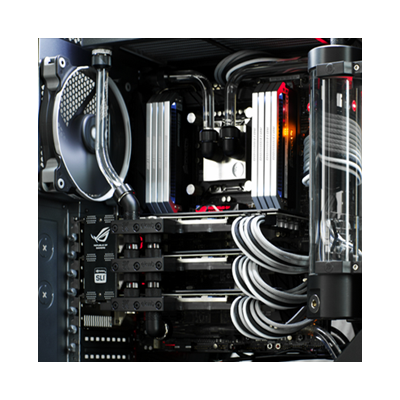AMD Ryzen 7 9800X3D, 5.2GHZ, 8 Cores, 16 Threads HARDTUBE LC

AMD Ryzen 7 9800X3D @ 5.20GHz, Socket AM5, Codename Granite Ridge-X, 8 Cores, 16 Threads, Base Clock 4.70GHz, Boost Clock 5.20GHz, SMT yes, Memory Controller Dual Channel PC5-44800U (DDR5-5600), ECC Support yes, Unlocked Multiplier yes, CPU Features MMX(+), SSE, SSE2, SSE3, SSE4.1, SSE4.2, SSE4a, x86-64, AMD-V, AES-NI, AVX, AVX2, AVX-512, FMA3, SHA, Architecture Zen 5, L2 Cache 8MB (8x 1MB), L3 Cache 96MB (32MB+64MB 3D), Maximum Memory 128GB, Memory Bandwidth 89.6GB/s.**
Welcome to the New Era of Performance
The AMD Ryzen 9000 series introduces the speed of "Zen 5" for gamers and developers, with pure power to tackle any game or workflow on the digital playground. The world's most advanced PC processor for gamers and developers extends AMD's performance leadership to power your PC with might.
When your PC is equipped with the world's most advanced desktop processor for gamers, you can focus on what truly matters: being victorious on the digital battlefield. Whether you're playing the latest titles or revisiting a classic, the AMD Ryzen 9000 series processors are a gaming powerhouse with powerful "Zen 5" cores. With up to 16 cores, 32 threads, boost clocks of up to 5.7 GHz, and up to 80 MB cache, the AMD Ryzen 9000 series processors deliver groundbreaking performance.
Whether you're rendering a high-poly scene in 3D, exporting massive video files, or visualizing an architectural dream, the AMD Ryzen 9000 series processors are designed to beat the clock. With time-saving connectivity like PCIe 5.0 storage support, ultra-fast WiFi 6E, AMD EXPO technology, up to 32 processing threads, and dedicated video accelerators, you can elevate your experience with AMD Ryzen 9000 series processors.
Accelerate your gaming with AMD EXPO technology. Higher memory frequencies and more aggressive settings can unlock higher and smoother frame rates in your favorite games. The brand-new AMD Ryzen 9000 series processors are packed with cutting-edge technologies for a seamlessly modern PC. Highlights include high-speed DDR5 memory, PCIe 5.0 support, AMD EXPO one-touch memory overclocking, and hyper-efficient 5nm manufacturing. Put an AMD Socket AM5 motherboard at the heart of your system to dominate the games you love today and tomorrow. When your PC demands the latest and greatest features, insist on AMD Ryzen processors.
 Liquid cooling system
Liquid cooling systemconsisting of: • Processor cooler • Graphics card cooler • Radiator • 12V pump(s)
• Coolant • Hard tube piping • Expansion tank • Accessories (connections, fans, etc.)
Water cooling in a PC is a powerful active technology for dissipating power loss that has been converted into heat.
In
computers, electrical energy taken from the power grid is converted
into heat. As the power density of modern computers increases, the
heating of the individual components also increases. While in earlier
computers the surrounding air was sufficient to dissipate the low
specific power loss in relation to the surface solely through radiation
and natural convection without any additional heat sinks, today
passively cooled PCs usually only use heat sinks; Supporting heat sinks
are used for actively cooled by fans.
The aim of water cooling in a
PC is to dissipate the heat generated in the PC as efficiently and
quietly as possible, especially from the semiconductors that heat up
during operation, such as the main or graphics processor. A possible
increase in the performance of the computer by operating it above the
officially permitted specifications (overclocking) is also an area of
application for water cooling.
The comparatively high heat capacity
of the cooling medium water favors the heat absorption of small-area
heat sources, such as those typical in a computer.
In addition to
improved heat dissipation, water cooling often enables significantly
quieter operation compared to other cooling concepts.
The heat flow
between the semiconductor and the surface effective for heat transfer is
ultimately limited by the finite thermal conductivity of the internal,
intermediate materials. As a sum, these materials represent a fixed and
unchangeable thermal resistance.

 Deutsch
Deutsch
 English
English